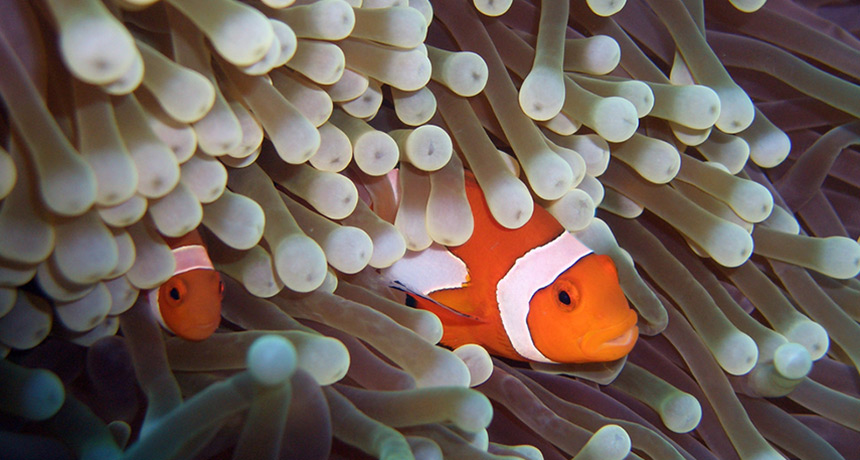In the Coral Triangle, clownfish figured out how to share

Clownfish and anemones depend on one another. The stinging arms of the anemones provide clownfish with protection against predators. In return, the fish keep the anemone clean and provide nutrients, in the form of poop. Usually, several individual clownfish occupy a single anemone — a large and dominant female, an adult male and several subordinates — all from the same species. But with 28 species of clownfish and 10 species of anemone, there can be a lot of competition for who gets to occupy which anemone.
In the highly diverse waters of the Coral Triangle of Southeast Asia, however, clownfish have figured out how to share, researchers report March 30 in the Proceedings of the Royal Society B. Anemones in these waters are often home to multiple species of clownfish that live together peacefully.
From 2005 to 2014, Emma Camp, of the University of Technology Sydney and colleagues gathered data on clownfish and their anemone homes from 20 locations that had more than one species of clownfish residents. In 981 underwater survey transects, they encountered 1,508 clownfish, 377 of which lived in groups consisting of two or more fish species in a single anemone.
Most of those cohabiting clownfish could be found in the waters of the Coral Triangle, the team found, with the highest levels of species cohabitation occurring off Hoga Island in Indonesia. There, the researchers found 437 clownfish from six species living among 114 anemones of five species. Every anemone was occupied by clownfish, and half had two species of the fish.
In general, “when the number of clownfish species exceeded the number of host anemone species, cohabitation was almost always documented,” the researchers write.
The multiple-species groups divvied up space in an anemone similar to the way that a single-species group does, with subordinate fish sticking to the peripheries. That way, those subordinate fish can avoid fights — and potentially getting kicked off the anemone or even dying. “Living on the periphery of an anemone, despite the higher risk of predation, is a better option than having no host anemone,” the team writes.
These multi-species groups might even be better for both of the clownfish species, since they wouldn’t have to compete so much over mates, and perhaps even less over food, if the species had different diets.
This isn’t the first time that scientists have found cohabitation to be an effective strategy in an area of high biodiversity. This has also been demonstrated with scorpions in the Amazon. But it does show how important it is to conserve species in regions such as this, the researchers say — because losing one species can easily wipe out several more.